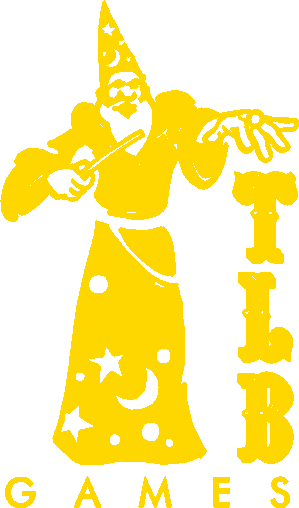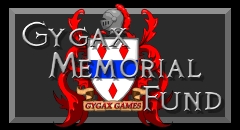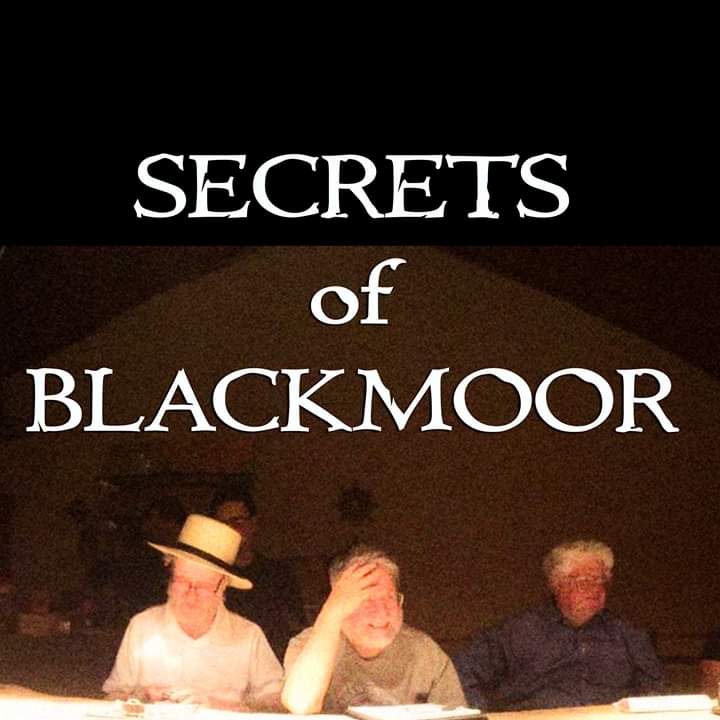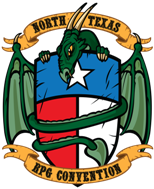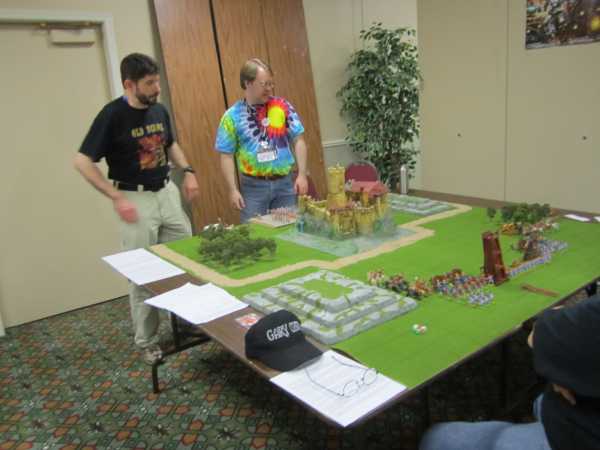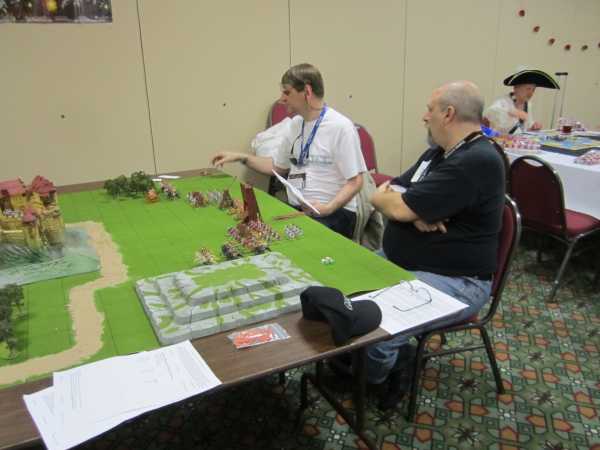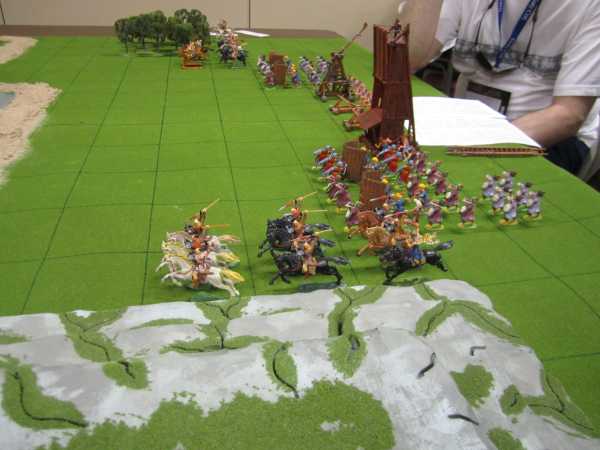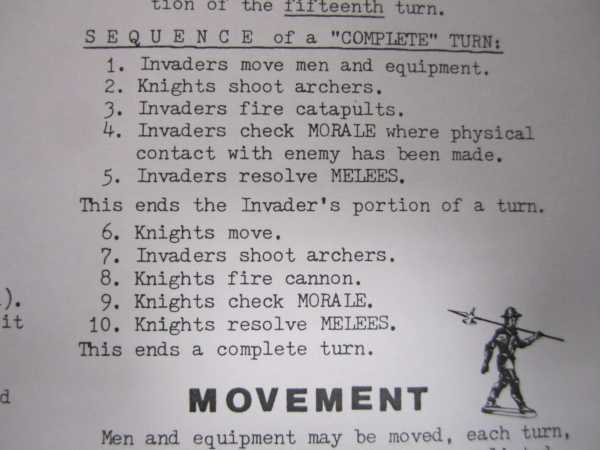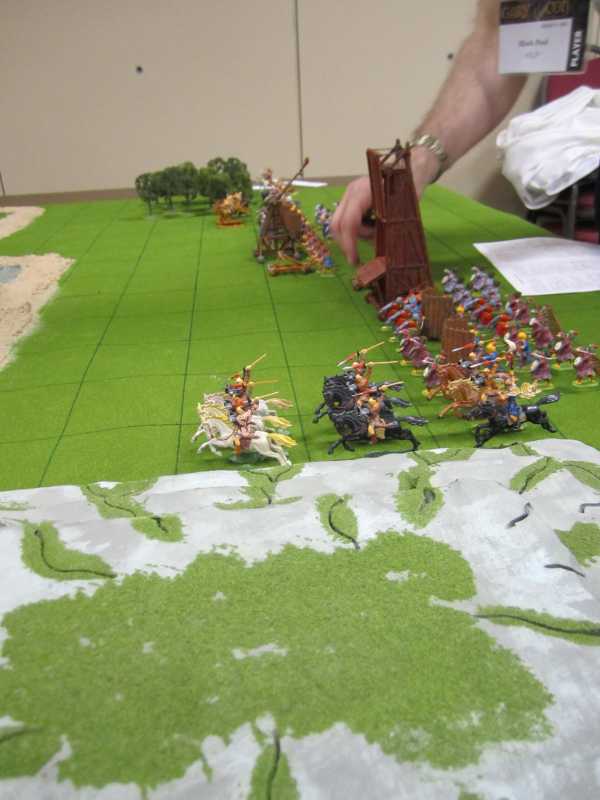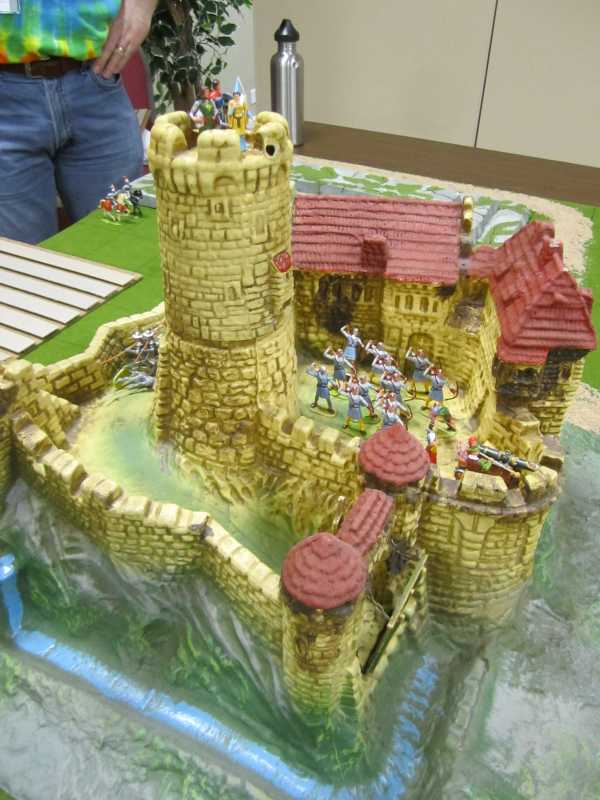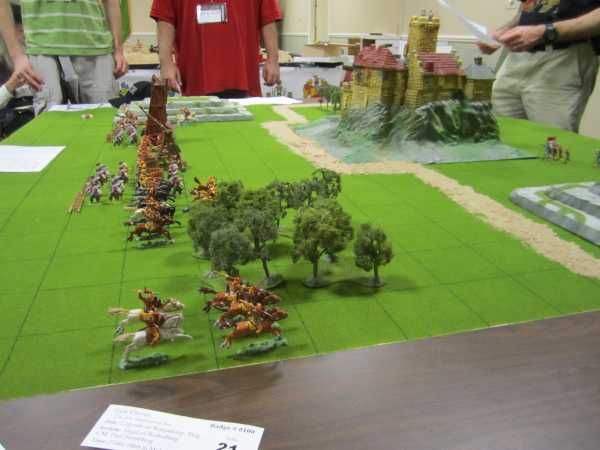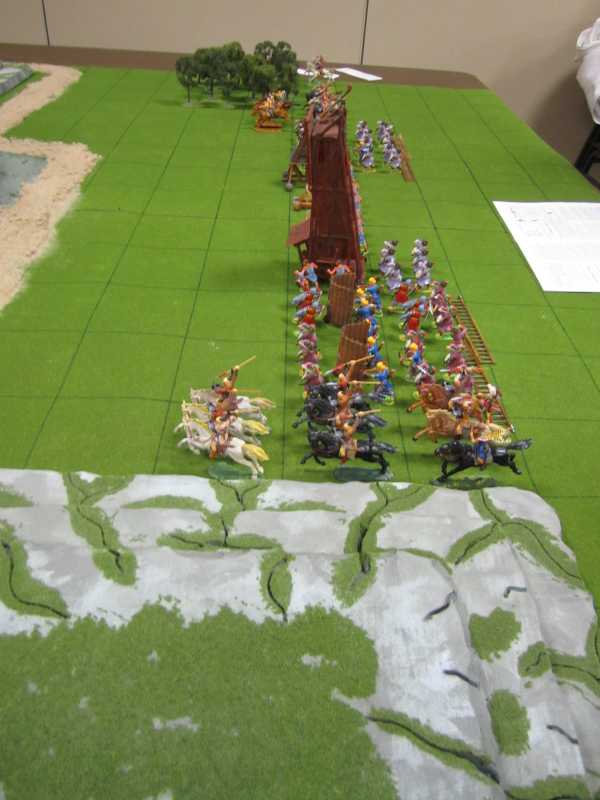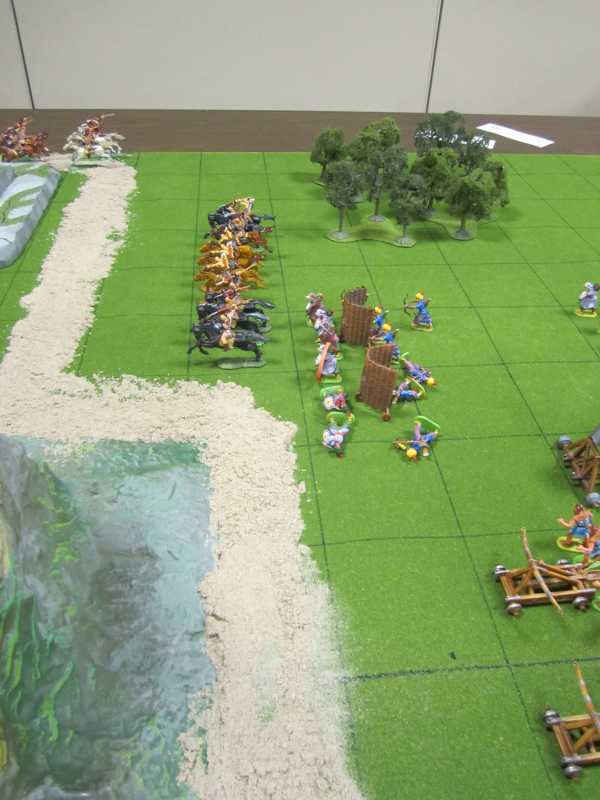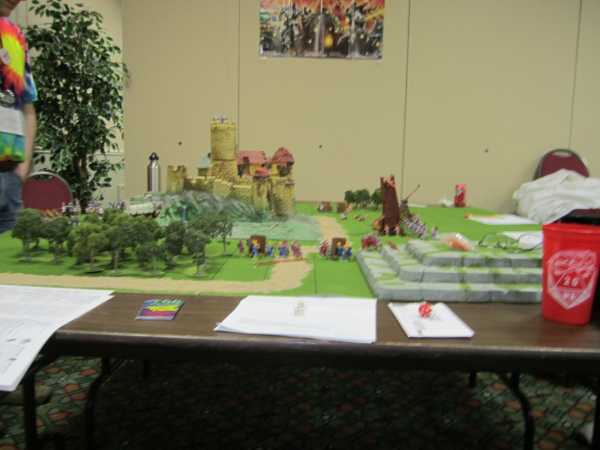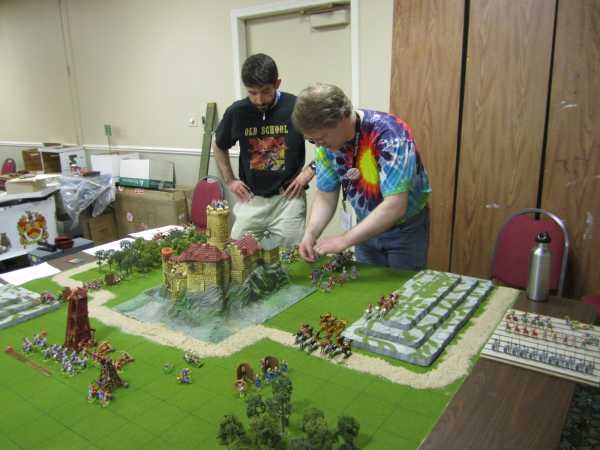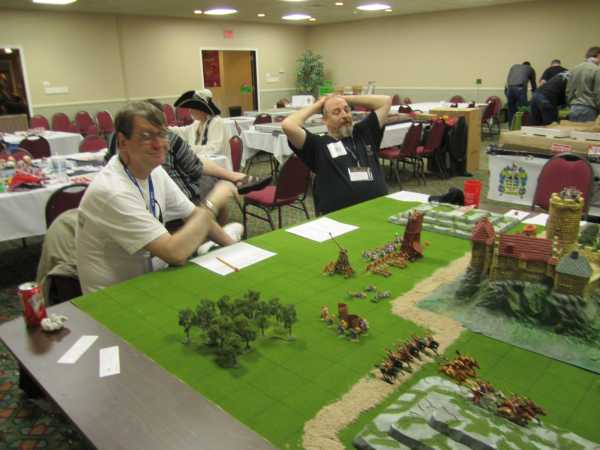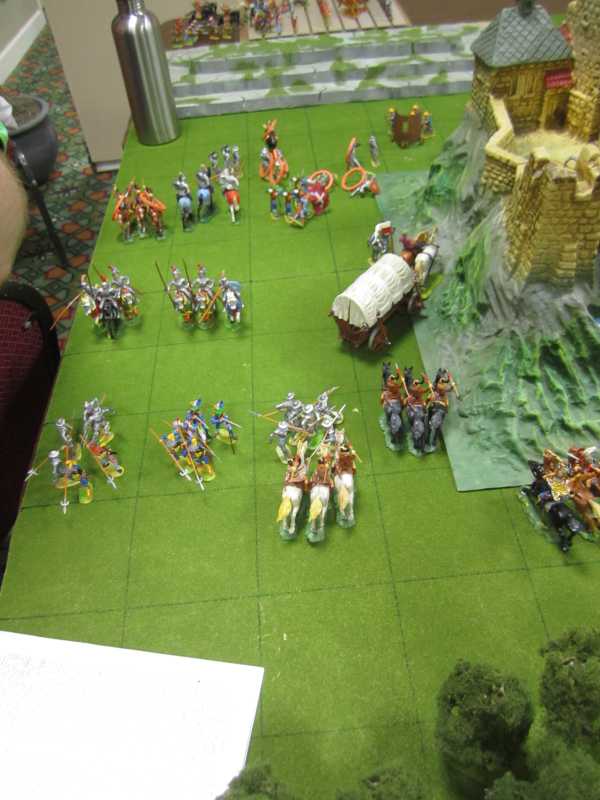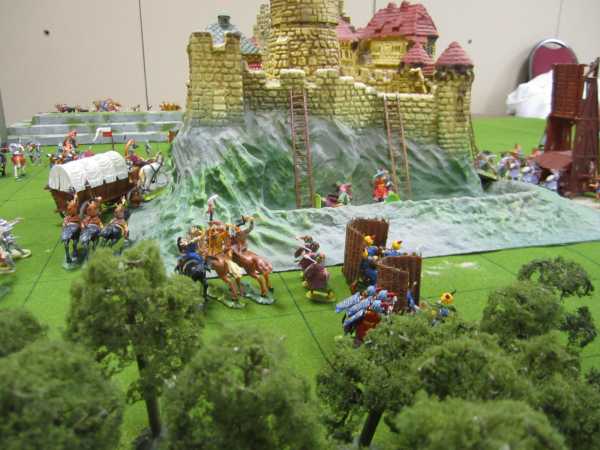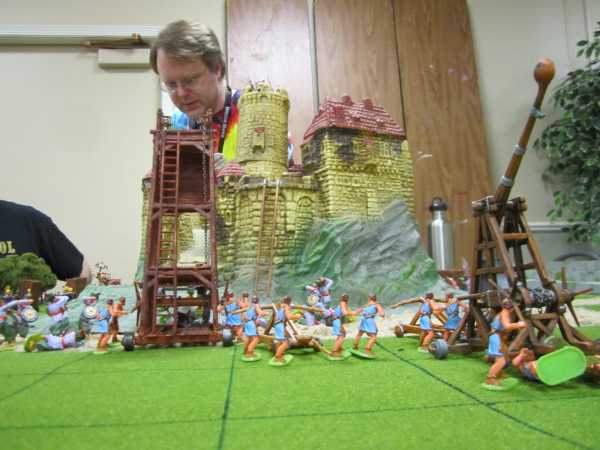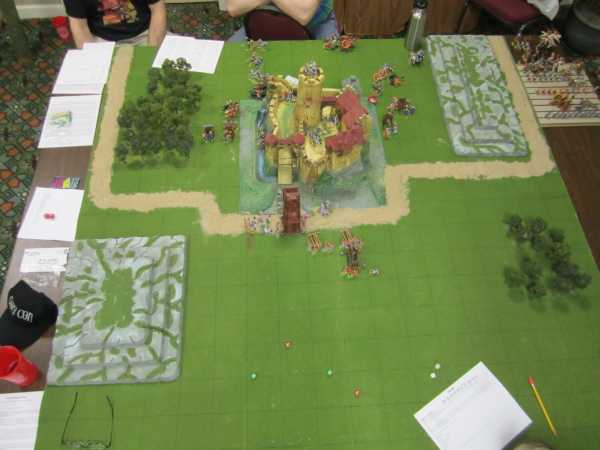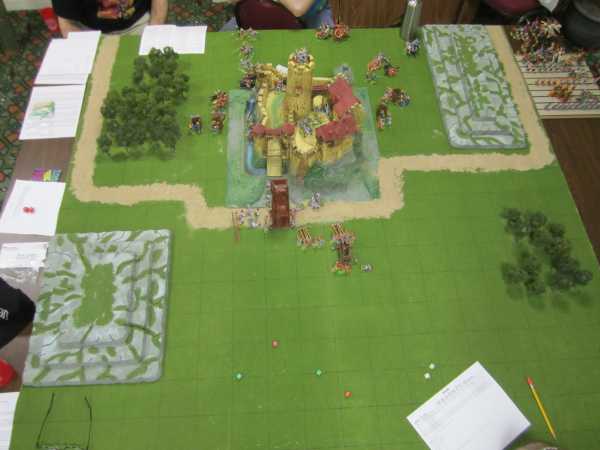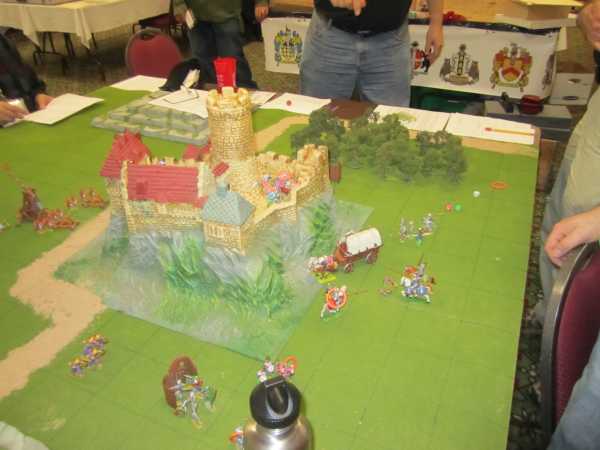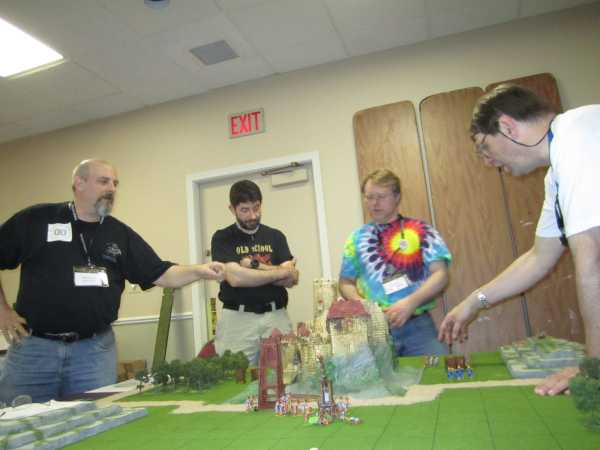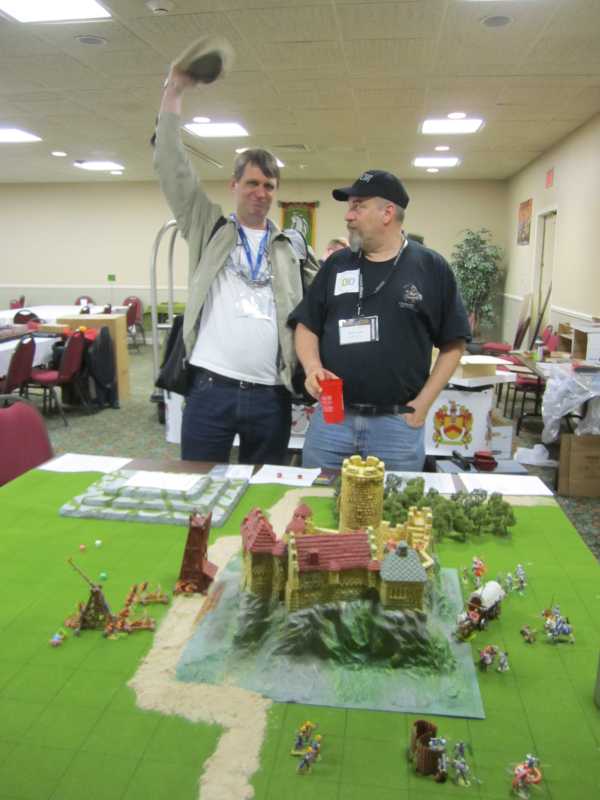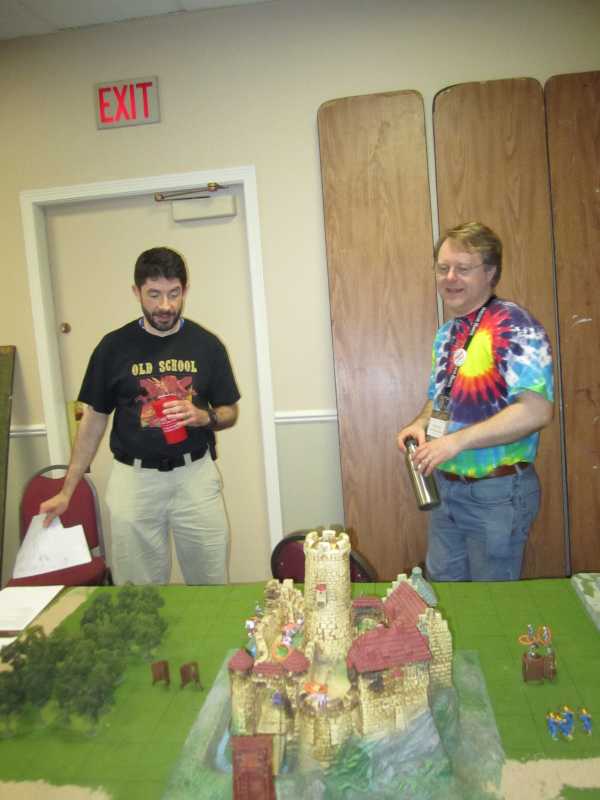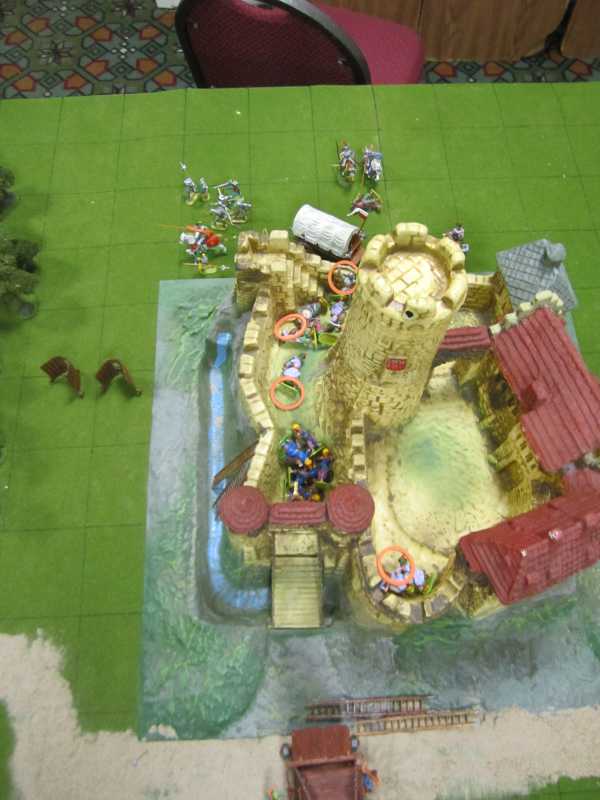Siege of Bodenburg
This is the game played by Gary Gygax in 1968 at Gen Con I. It was this game that inspired him to form the Castle & Crusade society and later write Chainmail and D&D. The game uses a set of rules created by Henry Bodenstedt for use with gorgeous 40mm Elastolin castle and miniatures. A fantastic and fun game with gaming history and nostalgia too!
History of the Siege Of Bodenburg
The game being played here today has a special place in the history of gaming, especially in regard to roleplaying games. How can a dusty old wargame from 1965 have anything to do with modern roleplaying games? Well, here is the story…
When examining the history of a phenomenon it is tempting to pick a point in time that is the flash of inspiration. As one ponders the emergence of Dungeons & Dragons and the roleplaying game hobby, they find themselves seeking that same instant - the touchstone of the Dungeons & Dragons phenomenon. Of course, there is rarely just one moment but several that lead to the creation of something never before conceived. This is the story of one of those moments.
It all starts in the basement, as all good D&D stories do, of a man named Henry Bodenstedt (1927-1999). Henry was heavily involved with gaming during the "second wave" days of wargaming. He and a fellow named Fred Webster founded Avalon Hill International Kriegspiel Society or AHIKS. The society was intended to match opponents and bring a more adult approach to the endeavor. Indeed, AHIKS is still around to this day, the longest lasting organization of it's kind.
Henry also ran a hobby supply business out of his home in Adelphia, New Jersey in the 1960's. The company, Continental Hobby Supplies carried supplied all manner of, "Military miniatures, war game accessories and literature". One brand of miniatures he imported from West Germany from the Hausser company. These miniatures were mainly 40mm and 70mm prepainted plastic miniatures and similarly scaled castles, siege engines, scenery, and other buildings. The figures represented World War II, Civil War, Revolutionary War, American West, Ancient, Middle East, Far East, and Norman, Saxon, Viking, and other Medieval period figures.
Called Elastolin, the composite material they were originally made of, the line of figures sold fairly well. However, Henry wanted to make sure his gamble on importing the figures was a sure one. Thus, Henry combined his wargaming hobby with his business sense and designed his eponymously named, Siege of Bodenburg in 1965. He had a few locals play it, his regular wargaming buddies, and everyone who played it in Henry's basement became acquainted with the game and the Elastolin figures. However, interest in the Elastolin figures didn't really take off until 1967.
That year Henry, published Siege of Bodenburg in the fledgling wargaming magazine, Strategy & Tactics, a magazine founded by Chris Wagner. The magazine catered toward both miniature and board wargamers. Since Chris produced the magazine while stationed in Japan with the Air Force, he needed someone to distribute the magazine to subscribers in the United States. It was thus, that Henry Bodenstedt became involved with Strategy & Tactics. Indeed, Henry is even credited with the naming of the magazine.
In the very first issue, Henry published several articles, one of which was Remagen Bridgehead, a WWII game based on the famous battle. All of Henry's articles were published in exchange for advertisements of Continental Hobby Supplies. The games, were, of course designed around figures and models sold by the hobby supply company. With the sales generated by Remagen Bridgehead, Henry realized he could move the Elastolin figures the same way. So, he dusted off his old Siege of Bodenburg rules created two years earlier and formalized them for publication.
About that same time in 1967, there was a little known postal Diplomacy club named the United States Continental Army Command (USCAC). The club was run by Scott Duncan, President, Bill Speer, Vice President, and Gary Gygax, treasurer.
Around, 1968 these guys decided to change the focus of this group. The new course was to be one which would encourage and foster the growth of an international club of wargamers.
Rechristened as the IFW (the International Federation of Wargamers), it was this group that, at the urging of Gary Gygax, ran the first GenCon in Lake Geneva in 1968. Nearly one hundred people attended from all over the country. One attendee by the name of Jerry White, brought with him a fabulous collection of Elastolin 40mm Medieval figures and accompanying castle to run Siege of Bodenburg.
Gary Gygax played in that game and was quite taken with the figures and castle brought by Jerry. It was this event and Gary's fascination with the Medieval period that inspired him to found the Castle & Crusade Society.
That winter Gary met a young Robbie Kuntz for the first time, as Gary and his friend Bill Hoyer played a game of Afrika Korps.
Not too long after, the Lake Geneva Tactical Studies Association was formed, by Gary, Rob, Mike Reese and a few others. This group regularly played miniatures games on the sand table in Gary's basement at 330 Center St. They often invited other folks to join in, especially one fellow who had a wonderful collection of Elastolin 40mm figures. That fellow was Jeff Perren.
One time when Jeff came up from Rockford, Illinois, he brought along a set of rules for 1:20 scale Medieval battles that he had written up for use with Elastolin figures. It was these four handwritten pages that became the foundation of the Chainmail game. Over the next several years these rules were expanded by Gygax.
By 1971, the Castle & Crusade Society was in full swing with King Robert (Kuntz) and The Earl of Walworth (Gary Gygax) at its head. The club's fanzine, The Domesday Book, served as the proving grounds for the Chainmail rules and the members as the soldiers who proved them. As time wore on the various players of the game were looking for some variety on the sand table. Gygax answered by throwing in The Fantasy Supplement, a section of rules for conducting fantastic battles such as those found in fantasy literature.
Formally published in 1971 by Guidon Games, Chainmail became immensely popular. This led to many fantastic tabletop battles and eventually inspired Dave Arneson to conceive of a game that became the foundation of fantasy roleplaying games. Gary soon after expanded on Dave's concept, creating the first fully realized roleplaying game in print. Dungeons & Dragons.
Now, some forty five years later, we take a moment to credit the role of Henry Bodenstedt's Siege of Bodenburg for being one of the touchstones of a hobby we all dearly love.
Caption
Caption
Caption
Caption
Caption
Caption
Caption
Caption
Caption
Caption
Caption
Caption
Caption
Caption
Caption
Caption
Caption
Caption
Caption
Caption
Caption
Caption
Caption
Caption
Caption
Caption
Caption

